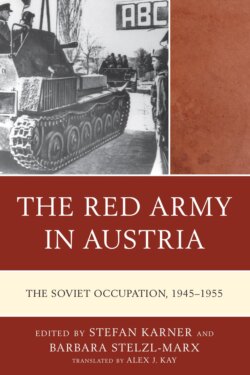Читать книгу The Red Army in Austria - Группа авторов - Страница 13
The Policies of Presidents Roosevelt, Truman, and Eisenhower toward Austria, 1943–1955
ОглавлениеGünter Bischof
The historiography of the Austrian occupation after the Second World War has come in fits and starts. An initial wave of works published in the 1960s by contemporaries who experienced the occupation personally1 was followed by standard works defining the scholarly discourse in the 1970s.2 The high point of scholarship came in the 1980s and 1990s, when a cohort of scholars worked with newly opened archival sources to write doctoral dissertations.3 In the past fifteen years some notable publications have appeared, but there was no longer a strong cohort of scholars working on the occupation decade and motivating each other’s research—it is rather “lone wolves” who do research disconnected from a larger community of scholars.4 Basic monographs covered the American political, cultural, and security policies vis-à-vis Austria.5 Kurt Tweraser’s prodigious research on American policies in its occupation zone in Upper Austria is unrivaled in research on occupation zones.6 The conference volume of a big scholarly meeting on the occupation decade organized by the Austrian Academy of Science in the “memorial year” 2005 presented a “summa” of sorts of Austrian occupation studies to date.7 The fifth edition of Gerald Stourzh’s classic history of the Austrian State Treaty negotiations was also republished in the “memorial year” 2005, as was Rolf Steininger’s short history of the Austrian State Treaty.8 Stourzh’s definitive work on the political arena was matched by Hans Seidel’s history of the Austrian economy in the occupation decade, which became an instant “classic.”9 A similar massive and long overdue volume of essays has recently been published on Austrian defense and security policies during the Cold War within the context of the rival block systems in Europe.10 The most dramatic recent advances in the study of the post-war Allied occupation of Austria have been made on the Russian zone as a result of the opening of the Soviet archives after the end of the Cold War and the collapse of the Soviet Union, whereby the Ludwig Boltzmann Institute for Research on War Consequences in Graz and the Austrian Academy of Sciences have led the way (also in the publication of weighty documentary volumes);11 the essays in this volume are testimony to this most recent progress in occupation studies.
